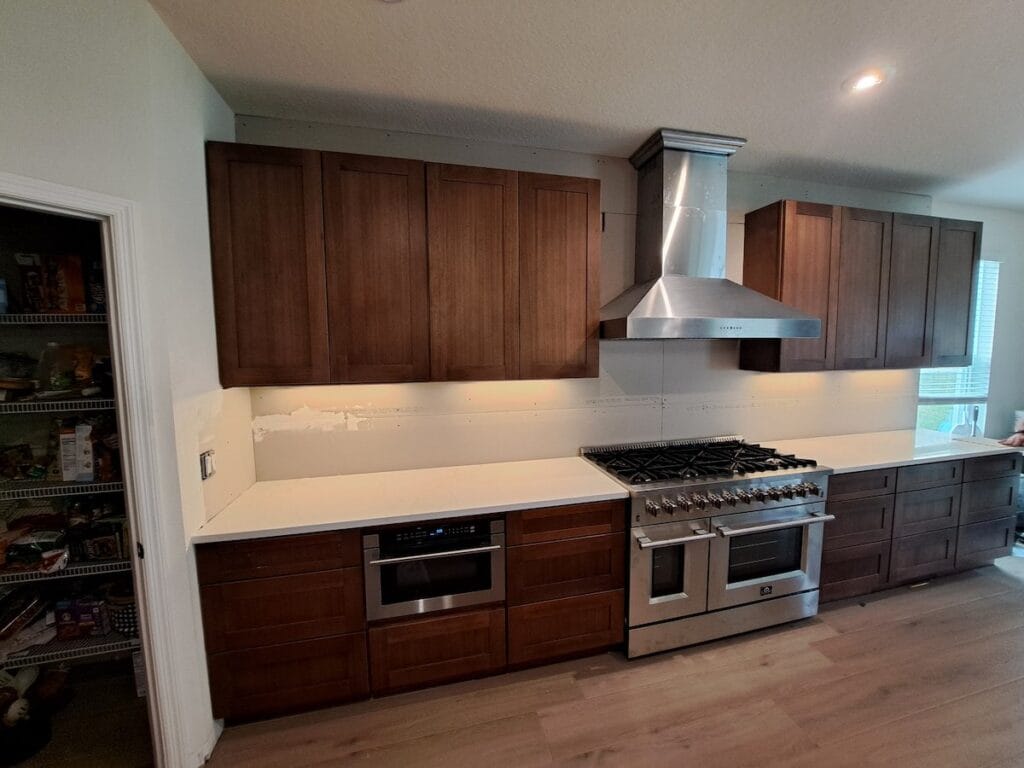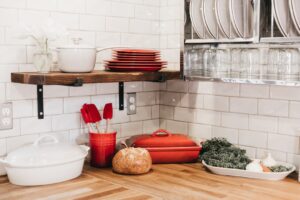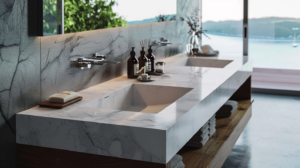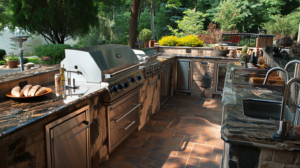When it comes to designing or renovating a kitchen, choosing the right countertop material is a pivotal decision. Marble countertops, renowned for their timeless elegance and luxurious appeal, are often considered a top choice. However, their suitability for high-traffic kitchens remains a subject of debate among homeowners and designers. This article delves into the pros and cons of marble countertops in busy kitchen environments, helping you make an informed decision with comprehensive insights into this classic material.
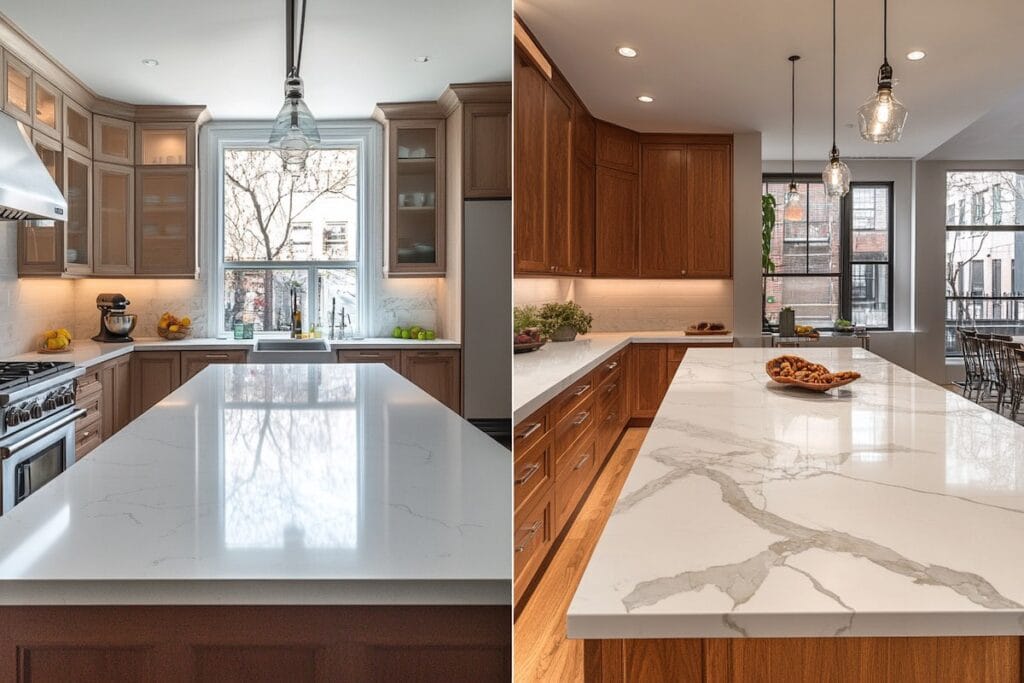
The Pros of Marble Countertops
- Timeless Aesthetic Appeal
- Marble countertops are synonymous with elegance and sophistication. Their natural veining and unique patterns create a one-of-a-kind surface that enhances the visual appeal of any kitchen. For instance, in a contemporary kitchen with sleek cabinetry and stainless-steel appliances, a Calacatta marble countertop can provide a striking contrast and elevate the overall aesthetic. This characteristic ensures that each countertop is entirely unique, adding a personalized touch to your kitchen design.
- Popular marble varieties, such as Carrara, Calacatta, and Statuario, offer diverse options to match various design styles, from modern minimalism to classic grandeur. Whether you prefer subtle gray veining or bold, dramatic patterns, there is a marble type to suit your taste.
- Cool Surface for Baking Enthusiasts
- Marble remains naturally cool to the touch, making it an ideal surface for rolling dough or working with pastries. Compared to materials like granite or quartz, marble’s coolness is more pronounced, providing a noticeable advantage for tasks that require maintaining a consistent temperature. While quartz can replicate this to some extent, marble remains the preferred choice among professional bakers for its superior heat-dissipating properties. This feature is especially appreciated by avid bakers, as it ensures consistent results when handling delicate doughs or chocolates. Professional chefs and home bakers alike value marble’s utility in food preparation.
- Increases Home Value
- The installation of marble countertops can significantly boost a home’s resale value. Prospective buyers often view marble as a premium material, which adds to the property’s appeal. Investing in marble can make your home stand out in a competitive real estate market.
- In addition to monetary value, marble contributes to the perceived luxury of your home, creating a positive impression on potential buyers or guests.
- Natural and Eco-Friendly Material
- Marble is a natural stone, making it a more eco-conscious choice compared to synthetic materials. When sourced responsibly, it aligns with sustainable design principles. The natural origin of marble also ensures that no two pieces are identical, adding authenticity to your kitchen.
- Many suppliers now focus on sustainable quarrying practices, allowing environmentally conscious homeowners to make responsible choices.
- Heat Resistance
- Marble’s natural heat resistance makes it less prone to damage from hot pots and pans, a practical feature for busy kitchens. However, while marble can withstand moderate heat, it’s still advisable to use trivets or hot pads to protect the surface and maintain its pristine appearance.
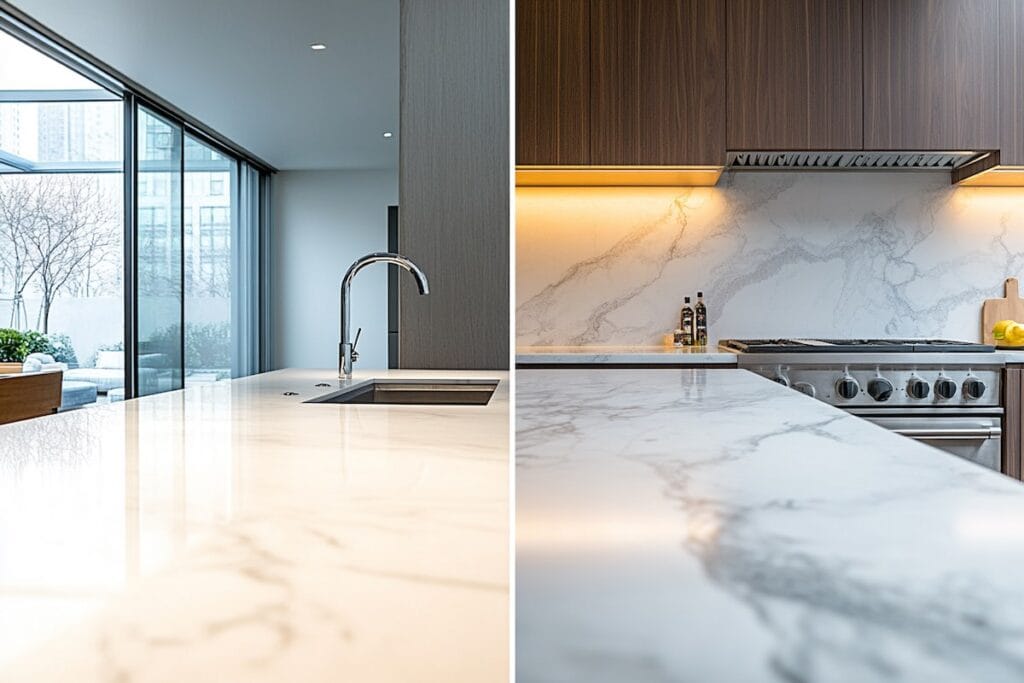
The Cons of Marble Countertops
- Susceptibility to Scratches and Stains
- Marble is a softer stone compared to granite or quartz, making it prone to scratches from sharp objects or heavy use. Accidental cuts from knives or impacts from heavy utensils can leave noticeable marks.
- Its porous nature makes it susceptible to staining from acidic substances like wine, coffee, and citrus, which are common in high-traffic kitchens. Over time, these stains can penetrate deeply into the stone, requiring professional restoration.
- Regular sealing can help mitigate these risks but requires ongoing maintenance to keep the surface protected.
- High Maintenance Requirements
- Marble countertops demand consistent care to preserve their beauty. Typically, this involves resealing the surface every 6 to 12 months, depending on usage, at a cost of approximately $50 to $150 per application. Additionally, regular cleaning with specialized stone cleaners can add to the maintenance expenses. Spills should be wiped immediately, and the surface needs periodic resealing to maintain its stain resistance. Neglecting these tasks can lead to long-term damage, reducing the countertop’s lifespan.
- Cleaning requires specialized stone cleaners to avoid damaging the finish. Abrasive or acidic cleaning agents can dull the surface, emphasizing the need for proper care.
- Cost Considerations
- Marble countertops are among the more expensive options available, with prices varying based on the type and quality of the stone. Rare marble varieties can command even higher prices due to their exclusivity and visual appeal.
- Installation costs can also be higher due to the expertise required to handle and install marble slabs. Proper installation is crucial to prevent cracking or uneven surfaces.
- Etching from Acids
- Even with sealing, marble can develop etching—a dull mark caused by chemical reactions with acidic substances. This is a common issue in busy kitchens where acidic foods and beverages are frequently used. Lemon juice, vinegar, and tomato sauce are among the culprits that can compromise the surface’s sheen.
- Over time, etching can accumulate, giving the countertop a worn or uneven appearance. Polishing can restore the finish but adds to the maintenance workload.
- Limited Durability in High-Traffic Areas
- In kitchens with heavy foot traffic and constant use, marble may show signs of wear more quickly than harder materials like quartz or granite. This makes it less ideal for families with young children or those who cook extensively. Frequent impacts, spills, and exposure to various kitchen activities can accelerate deterioration.
- Protective measures can help reduce visible wear but may not entirely prevent it in high-use environments.
Tips for Maintaining Marble Countertops in High-Traffic Kitchens
If you decide that marble countertops are the right fit for your kitchen, the following tips can help you maintain their beauty and functionality:
- Seal Regularly
- Apply a high-quality sealant to the surface at least once a year (or more frequently in high-use areas) to reduce its porosity and enhance stain resistance. Regular sealing forms a protective barrier, making spills easier to clean before they penetrate the stone.
- Use Cutting Boards and Trivets
- Prevent scratches by using cutting boards for food preparation and trivets for hot pots and pans. These simple precautions can greatly extend the life of your marble countertops.
- Clean Spills Immediately
- Wipe up spills promptly to prevent staining or etching. Use a pH-neutral cleaner specifically designed for natural stone. Avoid common household cleaners that may be too harsh for marble surfaces.
- Implement Preventative Measures
- Encourage family members and guests to avoid placing heavy objects or dragging items across the countertop to minimize surface damage. Using coasters for beverages and mats under appliances can provide additional protection.
- Regular Cleaning
- Dust and clean the surface daily with a soft cloth and a mild detergent to maintain its shine and cleanliness. Consistent care helps preserve the countertop’s natural beauty over time.
Alternatives to Marble Countertops for High-Traffic Kitchens
For homeowners who love the look of marble but are hesitant about its maintenance requirements, several alternatives provide a similar aesthetic with added durability. For example, quartz is non-porous and requires no sealing, offering a hassle-free option. Granite, while a natural stone like marble, is harder and more resistant to scratches and stains, making it better suited for busy kitchens. Porcelain countertops combine durability and heat resistance while replicating the veined elegance of marble. Each alternative offers distinct advantages, particularly for those prioritizing low-maintenance solutions.
- Quartz Countertops
- Engineered quartz mimics the appearance of marble but offers greater resistance to scratches, stains, and etching. It is also low maintenance and non-porous. Quartz surfaces combine beauty and practicality, making them an excellent choice for busy kitchens.
- Granite Countertops
- Granite is a natural stone that is harder and more durable than marble. It’s less prone to scratching and staining, making it a practical choice for busy kitchens. With proper sealing, granite can be both beautiful and long-lasting.
- Porcelain Countertops
- Porcelain is highly durable and available in designs that replicate marble’s veining. It’s also resistant to stains, scratches, and heat, making it a versatile option for high-traffic kitchens.
- Solid Surface Materials
- Materials like Corian can be crafted to imitate marble’s appearance while providing a non-porous and easy-to-maintain surface. These surfaces are ideal for homeowners seeking a blend of aesthetics and practicality.
Final Thoughts: Is Marble Right for Your High-Traffic Kitchen?
Marble countertops bring undeniable beauty and elegance to any kitchen, but they come with a unique set of challenges. For homeowners willing to invest time in maintenance and careful use, marble can be a stunning and functional choice. However, for those with busy households or minimal time for upkeep, alternative materials may be more practical.
Ultimately, the decision depends on your priorities, lifestyle, and willingness to care for your countertops. Marble’s undeniable beauty and cool surface appeal make it a standout choice for elegant kitchens, but its susceptibility to scratches, stains, and etching requires diligence. Alternatives like quartz and granite offer more durability and ease of maintenance, catering to those who prioritize functionality over aesthetics. By considering these factors, you can select the countertop material that best aligns with your kitchen’s demands and your personal preferences. By weighing the pros and cons outlined in this article, you’ll be well-equipped to make the best choice for your kitchen. Whether you opt for marble or a suitable alternative, your kitchen will undoubtedly benefit from the thoughtful consideration you put into selecting the perfect countertop material.

